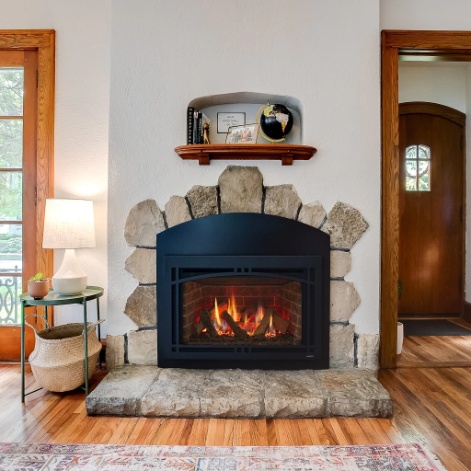Table of Contents
Are you struggling to keep your room warm during the colder months? Understanding heat output for rooms is crucial to maintaining a comfortable living space.
Factors such as room size, insulation, climate, sun exposure, and the number of occupants all play a role in determining the heat output needed.
In this article, we will explore how to calculate the heat output required for a room, the best ways to heat a room, and tips for maintaining optimal heat output.
Stay tuned for valuable insights on keeping your home cozy and warm.
Understanding Heat Output for Rooms
Understanding heat output for rooms is crucial in ensuring proper comfort and energy efficiency.
Heat output plays a pivotal role in creating a cozy and pleasant environment within a room. When considering room size, larger spaces require higher heat output to effectively warm the area, whereas smaller rooms may need less energy to reach the desired temperature. The quality of insulation is also a significant factor, as proper insulation helps in retaining the heat generated, resulting in improved comfort levels and reduced energy wastage. Varying heating requirements based on individual preferences and external weather conditions further impact the necessary heat output to maintain a comfortable indoor climate.
What Factors Affect Heat Output in a Room?
Several factors play a crucial role in determining the heat output in a room. Room size, insulation quality, climate conditions, sun exposure, the number of occupants, and the thermal conductivity of materials used in windows, walls, floors, and ceilings all impact the heat output.
Larger rooms require more energy to heat up compared to smaller spaces, as there is a greater volume of air that needs to be warmed. Adequate insulation is vital in preventing heat loss, ensuring that the warmth generated stays within the room.
The climate also plays a significant role, as colder regions necessitate more heating to maintain a comfortable temperature. The direction and intensity of sun exposure can influence how much natural heat is gained during the day, reducing the load on heating systems. Considering these factors can lead to increased energy efficiency and cost savings in the long run.
Room Size
Room size plays a critical role in determining the heating capacity required to maintain a comfortable temperature. The square footage of a room directly impacts the heat loss and heat gain calculations needed to determine the appropriate heating system size.
Larger rooms with greater square footage will typically require a higher heating capacity to counterbalance the heat loss through walls, windows, and doors. Understanding the relationship between room size and heat loss is crucial for homeowners to ensure energy efficiency and cost-effectiveness in heating solutions.
By calculating the heating needs based on room size, individuals can select the most suitable heating system that matches the specific requirements of their living space. Factors like insulation levels, ceiling height, and geographical location also play a role in determining the heating demands of a room.
Insulation
Insulation quality significantly affects the heat transfer within a room. Proper insulation, including thermal resistance in walls, windows, doors, floors, and ceilings, is essential for maintaining energy efficiency and reducing heat loss.
Having adequate insulation in these key areas helps to create a barrier that prevents heat from escaping during the cold winter months and keeps the heat out during the scorching summer days.
Walls with high thermal resistance, for example, can make a substantial difference in conserving energy by reducing the need for constant heating or cooling, ultimately leading to lower utility bills.
Windows and doors that are properly insulated contribute to maintaining a comfortable indoor temperature, preventing drafts and ensuring a consistent climate within the room.
Effective insulation also plays a crucial role in enhancing the overall thermal comfort of a living or working space, making it more pleasant and cost-effective to inhabit.
Climate
Climate conditions, including temperature variations, directly influence the heating requirements of a room. Understanding the climate in which a building is located is crucial for determining energy consumption, heating costs, and optimizing the heating system’s efficiency.
For instance, buildings situated in colder climates with harsh winters will have higher heating demands compared to those in milder regions. Temperature fluctuations impact how often the heating system needs to run to maintain a comfortable indoor environment. Factors such as insulation quality and building design play a significant role in retaining heat and reducing energy losses. By considering these aspects and tailoring heating solutions to specific climatic conditions, individuals and organizations can effectively manage energy usage and lower their heating expenses.
Sun Exposure
Sun exposure can significantly impact a room’s heating demand and performance. Proper insulation and window treatments are essential to leverage solar heat gain effectively while minimizing heat loss.
By strategically managing sunlight infiltration, you can influence the overall thermal comfort of your space. Harnessing solar energy through well-insulated windows and the right drapes or blinds can reduce the need for artificial heating, thereby lowering energy costs. Controlling the amount of sunlight that enters a room helps maintain a consistent temperature throughout the day, ensuring a cozy and efficient environment. Both residential and commercial buildings can benefit from these simple yet effective solutions to optimize heating efficiency and enhance overall comfort levels.
Number of Occupants
The number of occupants in a room impacts heating requirements and room temperature control. More occupants can increase the heat output needed to maintain a comfortable environment.
In spaces with varying levels of occupancy, it is crucial to consider how the number of people present can affect heat distribution. When more individuals are in a room, the collective body heat generated plays a significant role in influencing the overall temperature. Proper heating control becomes essential to adapt to these fluctuations and ensure that everyone experiences a cozy atmosphere.
By adjusting heating systems based on occupancy levels, it is possible to optimize energy efficiency and provide a pleasant indoor climate for all occupants, regardless of the room size.
How to Determine the Heat Output Needed for a Room?
Determining the heat output needed for a room involves calculating the room’s volume, considering insulation quality, determining the required temperature rise, and accounting for the heating load. These factors help in selecting the appropriate heating system for optimal comfort.
To start the process, begin by measuring the length, width, and height of the room to calculate its volume in cubic feet. Next, assess the insulation in the room, including windows, doors, walls, and ceiling, to determine how well heat is retained. Factor in the desired temperature increase from the outside temperature to the desired indoor temperature. Combining these aspects will provide an estimate of the amount of heat output required to maintain a comfortable environment in the room.
Calculate the Room’s Volume
Calculating the room’s volume is essential for accurately determining the heating requirements.
By knowing the volume of a room, you can determine the amount of heat needed to maintain a comfortable temperature efficiently. To measure the square footage, simply multiply the room’s length by its width. Once the square footage is obtained, multiply this by the ceiling height to calculate the cubic feet. This conversion is crucial as it accounts for the total air space within the room.
HVAC systems are sized based on these cubic footage calculations, ensuring proper heating distribution throughout the space.
Consider the Room’s Insulation
Assessing the room’s insulation quality is crucial for accurate heat output determination. Consider the thermal conductivity of materials used in walls, floors, and ceilings to calculate heat loss accurately.
Thermal conductivity, a key property of insulation materials, plays a vital role in determining how effectively heat is retained within a room. By understanding the thermal conductivity of different materials, one can evaluate their capacity to resist heat flow, thus influencing the overall energy efficiency of a space.
For instance, materials with low thermal conductivity, such as fiberglass or foam insulation, are highly effective in reducing heat transfer compared to materials with higher conductivity. This distinction is essential in optimizing insulation strategies for various areas within a room, ensuring minimal heat loss and maximum energy conservation.
Determine the Required Temperature Rise
Determining the required temperature rise helps in assessing the heating demand of a room. This calculation is essential for selecting an appropriate HVAC system and setting the thermostat to achieve optimal comfort.
By accurately assessing the temperature rise needed, individuals can ensure that their HVAC system has the capacity to meet the specific heating requirements of the space. Calculating the temperature rise involves understanding factors like insulation levels, size of the room, and heat loss through windows and doors. This knowledge allows for the selection of the right HVAC unit, be it a furnace, heat pump, or radiant heating system, that can efficiently provide the necessary warmth. Optimizing thermostat settings according to the calculated temperature rise not only enhances comfort but also helps in energy savings by avoiding overworking the system.
Account for Other Factors
Accounting for other factors such as heat sources and efficiency ratings is crucial in optimizing heat output. Consider energy consumption patterns and efficiency ratings when selecting heating solutions for a room.
Choosing the right heat source can significantly impact the overall warmth and comfort levels in a space. Various options, such as electric heaters, gas furnaces, or renewable energy sources like solar panels, offer different efficiency levels and heating capacities.
Efficiency ratings play a crucial role in determining the effectiveness of a heating system, showcasing how well it converts energy into heat. Being mindful of energy consumption patterns ensures you select a heating solution that aligns with your usage habits, promoting energy savings and reducing environmental impact.
What is the Best Way to Heat a Room?
Selecting the best way to heat a room depends on factors like heating requirements, room size, and personal preferences. Options include a central heating system, space heaters, radiant floor heating, or wood stoves, each offering unique benefits.
- A central heating system is efficient in heating larger areas consistently, but it can be costly to install and operate.
- Space heaters are convenient for smaller spaces and can provide quick warmth, though they are not suitable for whole-house heating.
- Radiant floor heating offers luxurious warmth from the ground up, ideal for tiled or stone floors.
- Wood stoves create a cozy ambiance and can be cost-effective, but they require regular maintenance and tend to heat smaller spaces effectively.
Central Heating System
A central heating system is a popular choice for heating larger spaces efficiently. This system distributes heat through a network of ducts and vents, utilizing advanced heating technology for enhanced energy efficiency.
The HVAC technology used in central heating systems ensures that each room in the house receives consistent and reliable warmth. By utilizing a thermostat to regulate the temperature, users can customize the heating settings to their preference, providing a comfortable environment throughout the day. Central heating systems are known for their quiet operation, eliminating the noisy disruptions often associated with other heating methods. This technology not only enhances the heating performance but also contributes to lower energy bills, making it a cost-effective and eco-friendly choice for homeowners.
Space Heaters
Space heaters offer a portable and convenient solution for heating smaller rooms or supplementing central heating systems. These heaters come in various wattages and heating capacities to suit different room sizes and heating requirements.
When choosing a space heater, it is essential to consider the room size and the level of heating needed. For example, a small bedroom may require a lower wattage heater, while a larger living room may benefit from a higher heating capacity. Understanding the square footage of the room is crucial in determining the appropriate wattage to ensure efficient heating without wastage of energy. Features like adjustable thermostats and programmable timers can enhance the control and energy efficiency of the heater.
Radiant Floor Heating
Radiant floor heating provides efficient and consistent heat distribution by warming the floor surface. This technology utilizes the thermal conductivity of floors to create a comfortable indoor environment with improved heating efficiency.
The principle behind radiant floor heating is that heat is radiated upwards from the floor, warming objects and people in the room. Unlike traditional heating systems that rely on blowing hot air, radiant heat is more even and gentle.
The heat emitted from the floor also tends to stay closer to the floor level, preventing heat loss through air circulation. This results in a cozy and comfortable living space, with the added benefit of potentially reducing energy costs compared to other heating methods.
Wood or Pellet Stoves
Wood or pellet stoves offer a rustic and energy-efficient heating solution for rooms. These stoves function as standalone heating appliances, providing warmth while adding a cozy ambiance to the space.
With their ability to burn renewable fuels like wood pellets, these stoves are environmentally friendly options for heating your home. The combustion process in wood or pellet stoves is highly efficient, converting the fuel into heat with minimal waste. This efficiency translates to cost savings for homeowners, as these stoves can heat a room effectively while consuming less fuel compared to traditional heating methods. Wood and pellet stoves come in various stylish designs, allowing you to complement your room decor while enjoying the benefits of efficient heating.
How to Maintain Optimal Heat Output in a Room?
Maintaining optimal heat output in a room involves regular cleaning and maintenance of the heating system, proper insulation, controlling ventilation by keeping doors and windows closed, and utilizing sunlight effectively for passive heating.
To ensure efficient heating, it is crucial to check and replace air filters in the heating system regularly. Clean filters allow for smooth airflow, resulting in better heat distribution.
Investing in high-quality insulation can significantly reduce heat loss, keeping the room warm and cozy.
Strategically opening curtains or blinds during the day to let sunlight in can help naturally warm up the space.
Closing off unused rooms and using draft stoppers at doors can prevent heat from escaping, maintaining a comfortable temperature.
Regularly Clean and Maintain Heating System
Regular cleaning and maintenance of heating equipment and appliances are vital for ensuring optimal heat output in a room. Proper upkeep of heating units enhances performance and longevity.
Neglecting regular cleaning and maintenance can lead to inefficiencies and even potential safety hazards. Dust and debris accumulation can hinder airflow and strain the system, decreasing its effectiveness.
It is recommended to schedule yearly professional inspections and cleanings to prevent breakdowns and costly repairs. Changing filters regularly and keeping vents clear of obstructions can significantly improve the overall efficiency of your heating system.
By following these guidelines, you can enjoy a warm and cozy environment while also extending the lifespan of your equipment.
Use Proper Insulation
Utilizing proper insulation in walls, floors, and ceilings is essential for maintaining optimal heat output. High thermal resistance helps in minimizing heat loss and improving energy efficiency.
By preventing heat from escaping through walls, ceilings, and floors, proper insulation ensures that the warmth generated by heating systems stays inside the room, creating a comfortable living environment. The concept of thermal resistance plays a crucial role in this process, as it measures how well a material can restrict heat flow. Effective insulation with high thermal resistance can significantly reduce the amount of energy needed to maintain a consistent temperature indoors, leading to lower utility bills and a smaller carbon footprint.
Keep Doors and Windows Closed
Controlling ventilation by keeping doors and windows closed helps in maintaining consistent room temperature and reducing heating demand. Properly sealed doors and windows prevent heat loss and improve heating control.
This practice is particularly crucial during colder months when the warmth generated by heating systems needs to be retained within living spaces. Proper sealing techniques, such as using weather stripping around door frames and caulking windows, create a barrier against drafts and leaks. By reducing these sources of heat loss, homeowners can achieve greater energy efficiency and lower utility bills. Ensuring that all gaps and cracks are sealed properly also contributes to a more comfortable and cozy indoor environment during chilly weather.
Utilize Sunlight
Utilizing natural sunlight for passive heating can supplement room heating systems and improve overall heating performance. Properly positioned windows and sun-exposed areas can help in reducing energy consumption.
Incorporating passive heating through sunlight can also contribute to creating a more comfortable and sustainable indoor environment. By harnessing the natural warmth of the sun, occupants can enjoy a cozy atmosphere without relying solely on artificial heating sources.
Strategic window placement allows for better control of temperature regulation, maximizing the benefits of solar heat gain during the colder months. This not only enhances energy efficiency but also reduces utility costs over time, making it a cost-effective and eco-friendly heating solution.
Frequently Asked Questions
1. What heat output does my room need?
The heat output needed for your room depends on room size, insulation quality, climate conditions, sun exposure, and the number of occupants.
2. How does room size affect heat output requirements?
Larger rooms require more heat output to maintain a comfortable temperature compared to smaller rooms because there is more air to warm up.
3. Why is insulation important for determining heat output?
Good insulation reduces heat loss, ensuring that the heat produced by your heating system stays inside the room, improving energy efficiency and comfort.
4. How does climate influence heat output needs?
In colder climates, rooms require a higher heat output to maintain a comfortable indoor temperature due to lower outside temperatures affecting the indoor environment.
5. How can sun exposure affect a room’s heating needs?
Rooms with more sun exposure may require less artificial heating due to natural warming from sunlight, which can help reduce heating costs.
6. What are effective ways to maintain optimal heat output in a room?
Maintaining optimal heat output involves regular maintenance of heating systems, using proper insulation, keeping doors and windows closed to avoid heat loss, and utilizing sunlight for passive heating.
Latest Articles

What Is An NG (Natural Gas) Indicator And Why You Need It For Your Fireplace
Table of Contents1 Understanding Natural Gas Fireplaces2 What is an NG Indicator?3 Importance of NG Indicators for Safety4 Types of NG Indicators5 Installation and Maintenance of NG Indicators6 Signs of a Faulty NG Indicator7 Frequently Asked Questions Natural gas fireplaces are a favored option among numerous homeowners due to their convenience and effectiveness. But, what is an NG (Natural Gas) indicator and why you need it for your fireplace? It is imperative to comprehend how they function and the significance of having an NG (Natural Gas) indicator for safety purposes. This article delves into the definition and significance of NG indicators. We will discuss the potential hazards associated with the absence of one and the various types of indicators accessible. Also, we will discuss installation and maintenance recommendations, and methods to recognize and rectify issues with malfunctioning indicators. Stay well-informed and ensure the safety of your home by referring to this exhaustive guide. Understanding Natural Gas Fireplaces Natural gas fireplaces serve as an efficient and convenient heating option for numerous households. They utilize natural gas as a fuel source to deliver consistent warmth and ambiance. How They Work and Why They Need NG Indicators The operation of natural gas fireplaces involves igniting natural gas to generate heat. This process requires diligent monitoring to ensure both safety and efficiency, a task facilitated by the use of NG indicators. NG indicators play a critical role in detecting potential gas leaks. They enable residents to promptly address and mitigate any associated hazards. Through continuous monitoring of gas levels and providing timely warnings and alerts, NG indicators uphold a secure indoor environment. It is imperative to ensure that these indicators function properly to facilitate the effective operation of natural gas fireplaces. This helps mitigate the inherent risks linked to gas leaks. What is an NG Indicator? An NG indicator is a specialized device equipped with advanced sensors and technology. It is specifically designed to detect natural gas leaks and monitor gas pressure in appliances, such as fireplaces. Definition and Purpose The NG indicator functions as a detector that monitors gas appliances for potential leaks. It provides essential functionality to ensure safety in households utilizing natural gas. These detectors play a crucial role in protecting residences by notifying occupants of dangerous gas leaks long before they escalate into perilous situations. Through continuous monitoring of gas levels in the vicinity, NG indicators offer an additional layer of protection. This is particularly important in properties that rely on gas-operated fireplaces or stoves. These devices not only help avert potential disasters but also enhance the overall peace of mind of homeowners. They assure them that their living spaces are equipped with reliable safety features. Importance of NG Indicators for Safety Natural gas indicators are essential for maintaining safety in households equipped with natural gas appliances. These devices serve as a proactive measure to promptly detect gas leaks. This offers homeowners a sense of security and assurance. Potential Dangers of Not Having an NG Indicator The absence of an NG indicator in residences equipped with natural gas appliances can pose significant hazards. This includes the risk of undetected gas leaks , carbon monoxide poisoning , and pilot outages that may lead to dangerous situations. These potential risks can profoundly impact indoor air quality. They directly influence the health and safety of individuals residing in the household. Undetected gas leaks can go unnoticed, gradually permeating the air and creating a potentially explosive environment. Insufficient ventilation from undetected exposure to carbon monoxide can lead to serious health complications. These range from mild symptoms such as dizziness to fatal poisoning. Without proper monitoring from an NG indicator, families are left susceptible to these concealed threats. This underscores the critical importance of implementing proactive measures to mitigate such risks. Types of NG Indicators Indicators for Natural Gas (NG) are available in diverse types. Each presents distinct detection capabilities tailored to specific requirements, encompassing both manual and automated alternatives. Manual vs. Automatic Indicators Manual NG indicators require user intervention for monitoring gas levels and identifying leaks. On the other hand, automatic indicators employ sophisticated technology to deliver continuous, real-time monitoring. This heightened efficiency and oversight enhance safety protocols. Conventional manual indicators rely on individuals to physically inspect and evaluate gas levels periodically. This renders them more susceptible to human errors. Conversely, automatic indicators feature sensors capable of promptly detecting even the most minute fluctuations in gas levels. This establishes a more dependable and precise monitoring mechanism. Automatic indicators can activate alerts and shut-off systems upon detecting a leak. This ensures immediate action to avert potential hazards. This advanced technology enhances safety protocols and instills a sense of command and assurance among users. Installation and Maintenance of NG Indicators The reliable and accurate performance of NG indicators necessitates proper installation and consistent maintenance. This often entails professional installation and adherence to recommended service guidelines. Proper Installation and Regular Maintenance Tips The proper installation of NG indicators involves adhering to the specifications in the user manual. Maintenance protocols entail strict adherence to a predetermined maintenance schedule to ensure sustained operational efficiency. During the installation phase, it is imperative to verify that the NG indicators are securely affixed in the designated location as stipulated by the manufacturer. Crucial steps include confirming power source compatibility and ensuring proper grounding of the device to optimize performance. Calibration of the indicator must be executed meticulously to ensure precise readings. Regarding maintenance, essential practices include regular inspection for signs of wear, thorough cleaning of the indicator components, and routine functionality tests. By allocating time to a consistent maintenance regimen, the NG indicator can operate with optimal efficiency over an extended duration. Signs of a Faulty NG Indicator Recognizing indicators of a malfunctioning NG indicator is essential for upholding safety and performance standards. Inaccuracies and detection issues can undermine the efficacy of these devices. Identifying and Addressing Issues The process of identifying and addressing issues related to NG (natural gas) indicators requires a systematic troubleshooting approach. This ensures their optimal performance

What You Need To Know About Gas Log Set Safety And Installation Considerations
Table of Contents1 Understanding Gas Log Sets2 Safety Considerations for Gas Log Sets3 Installation Guidelines for Gas Log Sets4 Maintaining and Troubleshooting Gas Log Sets5 Frequently Asked Questions Gas log sets are a favored option among homeowners seeking to enjoy the comfort and atmosphere of a conventional fireplace without the inconvenience of wood. This article tells you what you need to know about gas log set safety and installation considerations. Before incorporating one into your residence, it is imperative to understand the safety considerations associated with their use. This discussion delves into the potential hazards linked with gas log sets. It presents crucial precautions to uphold the safety of your home. Also, it outlines proper installation procedures and offers insight into common errors to avoid. Finally, it provides advice on maintenance and troubleshooting. Gain comprehensive knowledge on gas log set safety and installation considerations. Understanding Gas Log Sets Comprehending gas log sets is essential for individuals seeking to elevate their fireplace experience, and for gas lag set safety and installation. These heating appliances can operate on either natural gas or propane. In addition, they are available in a range of styles, including vented, ventless, and vent-free options. They provide an array of benefits and customization opportunities through various fireplace accessories. What are Gas Log Sets? Gas log sets are meticulously crafted artificial logs. They are designed to imitate the appearance and functionality of authentic wood logs within fireplaces. These gas log sets typically consist of ceramic or refractory concrete logs that have been skillfully molded and painted. This allows them to replicate the natural grain and texture of real wood. The logs are arranged in various configurations within the fireplace. They establish a realistic and welcoming ambiance. In addition to the logs, gas log sets often include fireplace accessories such as glowing embers. Accessories also include decorative stones, and even pine cones to enhance the overall aesthetic appeal. Homeowners can select from an array of placement options. These include traditional wood stack, cascading driftwood, or a contemporary geometric arrangement. Homeowners can align their preferred style and design preferences. Safety Considerations for Gas Log Sets Safety considerations for gas log sets are of utmost importance to guarantee a secure and pleasant fireplace experience. It is essential to address potential hazards such as carbon monoxide exposure, gas leaks, and fire safety to maintain a safe environment for homeowners. Potential Hazards and Precautions Gas log sets come with potential hazards that must be taken seriously, including the risks of gas leaks, carbon monoxide poisoning, and fire incidents. It is imperative to establish and adhere to rigorous safety measures to ensure the well-being of individuals and properties involved in the use of gas log sets. Gas leaks represent a significant hazard when utilizing gas log sets. They can result in the accumulation of combustible gas within the premises, heightening the possibility of explosions or fires. Carbon monoxide, an insidious gas generated during incomplete combustion, poses a grave threat due to its colorless and odorless nature, making it undetectable without proper monitoring. To address these risks effectively, it is vital to install carbon monoxide detectors and gas leak sensors in the vicinity of the gas logs. Routine maintenance checks on the gas log system, including cleaning and inspection procedures, are critical to ensure safe operations and the prompt identification of potential issues. In case of a gas leak or suspected presence of carbon monoxide, immediate evacuation of the affected area is paramount, followed by prompt contact with emergency services. Recognizing the distinct odor of rotten eggs associated with natural gas can serve as an early warning sign, prompting swift actions to avert any potential accidents. Installation Guidelines for Gas Log Sets The installation of a gas log set necessitates meticulous planning and strict adherence to specific guidelines. This includes verifying a secure gas connection, ensuring proper gas lines are in place, and complying with local building codes. Often, the complexity of these requirements may require the expertise of a certified technician. Proper Installation Techniques The appropriate installation procedures for gas log sets involve the secure connection of gas lines, meticulous adherence to installation manuals, and strict compliance with local building codes. It is imperative to prioritize the guarantee of secure gas connections to avert leaks and potential safety hazards. During the installation of gas log sets, utilizing suitable sealants and fittings is essential to establish a tightly sealed connection. The correct installation of gas lines is critical for both the safety and operational efficacy of the gas log set. Reference to the installation manual is highly advisable for detailed, step-by-step guidance to prevent inaccuracies and ensure the successful establishment of the gas log set. Consistently adhering to building codes and regulations upholds safety standards. Seeking guidance and confirmation from a certified technician before and after installation can offer invaluable support and assurance throughout the process. Common Installation Mistakes to Avoid It is imperative to avoid common installation errors to ensure the secure and effective operation of gas log sets. This includes verifying proper gas connections and compliance with building codes. Improper gas connections can result in leaks and potential hazards, underscoring the importance of verifying the tightness and correct alignment of all fittings. Failure to adhere to building codes can lead to structural complications, penalties for non-compliance, or even safety concerns. To prevent these oversights, it is advised to consult the manufacturer’s installation guidelines and strictly adhere to local regulations. Engaging a certified technician for the installation of gas log sets guarantees that the procedure is carried out accurately and securely. This provides assurance that the system is functioning as intended. Maintaining and Troubleshooting Gas Log Sets Regular maintenance and troubleshooting of gas log sets are imperative to uphold their optimal performance and safety. This includes thorough examination of the pilot light, pilot assembly, and other gas appliances to preserve heating efficiency and promptly resolve any arising issues. Tips for Maintenance and Repair Ensuring the proper maintenance of your gas log set necessitates conducting

Key Considerations For Using Compressed Liquid Propane In Fireplace Installation
Table of Contents1 What is Compressed Liquid Propane?2 Benefits of Using Compressed Liquid Propane in Fireplaces3 Safety Precautions for Installing Compressed Liquid Propane Fireplaces4 Installation Process for Compressed Liquid Propane Fireplaces5 Maintenance and Care for Compressed Liquid Propane Fireplaces6 Alternative Fuel Options for Fireplaces7 Frequently Asked Questions If you are contemplating the use of compressed liquid propane in your fireplace installation, this discussion will delve into the advantages of adopting this alternative fuel option. These benefits include enhanced efficiency, cost savings, and important safety precautions to consider. Furthermore, a detailed step-by-step guide on the installation process will be provided, along with recommendations for maintenance and care. A comparison of various fuel options for fireplaces will also be conducted to assist you in making an informed decision. We encourage you to stay engaged to gain insights into optimizing your fireplace’s capabilities with compressed liquid propane. What is Compressed Liquid Propane? Compressed Liquid Propane is a versatile energy source contained in a high-pressure propane tank. It finds extensive utility in both residential and commercial settings, prominently including fireplaces. Recognized for its convenience and efficiency, Compressed Liquid Propane emerges as a favored option for heating residential spaces and facilitating culinary pursuits across various environments. Additionally, it serves as a viable fuel substitute in vehicular contexts, portable cooktops, and outdoor grilling scenarios due to its propensity for clean combustion. The attribute of portability, coupled with ease of storage, positions Compressed Liquid Propane as an optimal energy source for individuals residing off the conventional grid. It is also great for engaging in outdoor activities such as camping and recreational vehicle (RV) travel. Moreover, the high energy density inherent to Compressed Liquid Propane renders it a dependable choice for sustaining generators during instances of power disruptions. Benefits of Using Compressed Liquid Propane in Fireplaces Utilizing Compressed Liquid Propane for fireplace installation presents several benefits. These include enhanced fuel efficiency, convenience, cost-effectiveness, and a favorable environmental footprint. These attributes render it a recommended option for heating solutions, applicable to both on-grid and off-grid settings. Efficiency and Cost Savings The utilization of Compressed Liquid Propane in fireplaces offers significant advantages, notably in terms of high fuel efficiency and cost-effectiveness. These attributes are underscored by the exceptional BTU rating and overall heating efficiency of Compressed Liquid Propane. The elevated fuel efficiency exhibited by Compressed Liquid Propane fireplaces necessitates less fuel to generate the same level of heat compared to traditional wood-burning fireplaces or electric heating systems. Consequently, homeowners can realize cost savings on their heating expenditures over an extended period. Moreover, the clean-burning characteristics of propane minimize maintenance costs linked to soot and ash cleanup. This further enhances the cost-effectiveness of employing propane fireplaces. Safety Precautions for Installing Compressed Liquid Propane Fireplaces Ensuring safety is of utmost importance during the installation of Compressed Liquid Propane fireplaces. This requires strict adherence to safety regulations, meticulous attention to proper ventilation requirements, careful control of ignition sources, and the incorporation of carbon monoxide and gas leak detection systems. Important Safety Measures Essential safety protocols for the installation of Compressed Liquid Propane fireplaces encompass adherence to fire safety regulations. Engaging in professional assessments and employing sophisticated gas leak and carbon monoxide detection mechanisms is crucial. Professional evaluations play a critical role in identifying any prospective hazards or irregularities within the fireplace infrastructure. These assessments are vital in ensuring the operational integrity of all components and compliance with safety protocols. Routine inspections serve to forestall potential fire incidents, gas discharges, or carbon monoxide emissions that could pose significant threats to both the property and individuals in the vicinity. The utilization of advanced gas leak and carbon monoxide detection systems serves as an additional safeguard by promptly notifying occupants of any elevated levels of these hazardous gases. Installation Process for Compressed Liquid Propane Fireplaces The installation procedure for Compressed Liquid Propane fireplaces encompasses several critical steps. These include: Adhering to installation guidelines Correctly positioning the propane tank Ensuring precise gas line installation Optimizing heat output Monitoring pressure regulation Establishing the pilot light Step-by-Step Guide The installation process of Compressed Liquid Propane fireplaces involves a systematic approach. This begins with the construction of the firebox, followed by the installation of the gas control valve, setup of the ignition system, design of the flue, and verification of a suitable combustion air supply. The construction of the firebox assumes critical importance as it serves as the foundation of the fireplace structure. It securely holds the combustible materials in place. Subsequently, the gas control valve plays a key role in managing the propane flow, guaranteeing safe and efficient operation. The installation of the ignition system facilitates convenient and reliable fire initiation. Designing the flue is a necessary step to direct exhaust gases outside, thus preventing their accumulation indoors. Moreover, ensuring a proper combustion air supply is essential to sustain optimal burning conditions and enhance fuel consumption efficiency. Each component contributes significantly to the functionality and safety of the fireplace installation process. This underscores the importance of meticulous attention to detail and adherence to established protocols. Maintenance and Care for Compressed Liquid Propane Fireplaces Consistent maintenance and attention to Compressed Liquid Propane fireplaces are imperative to guarantee their optimal functionality. This includes adherence to prescribed maintenance protocols, regular chimney upkeep, prevention of soot accumulation, and scheduling of routine propane deliveries and professional inspections. Tips for Keeping Your Fireplace in Good Condition For the maintenance of your Compressed Liquid Propane fireplace, it is essential to conduct regular checks on ignition sources. Monitor flame appearance, clean the gas burner and pilot assembly, and verify the correct operation of the safety shut-off valve. The inspection of ignition sources requires a detailed examination of the electronic igniter. This helps identify any signs of damage or corrosion and ensures proper sparking upon activation. Monitoring flame appearance involves observing a consistent blue flame with minimal flickering, which signifies efficient combustion. Cleaning the gas burner and pilot assembly can be performed using a soft brush or compressed air to eliminate any dirt or debris that may


















































































